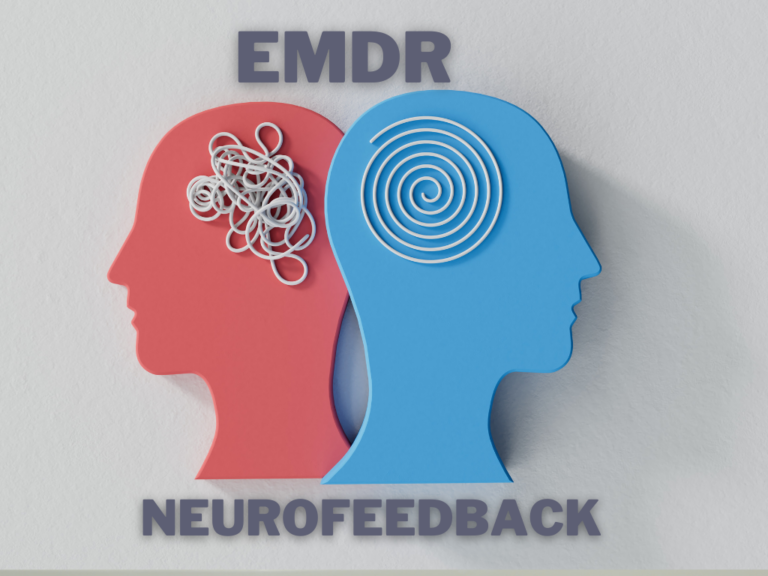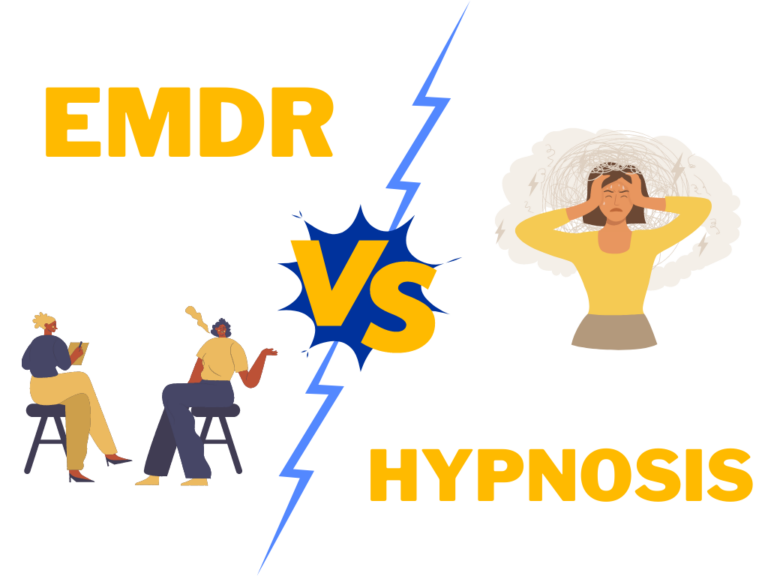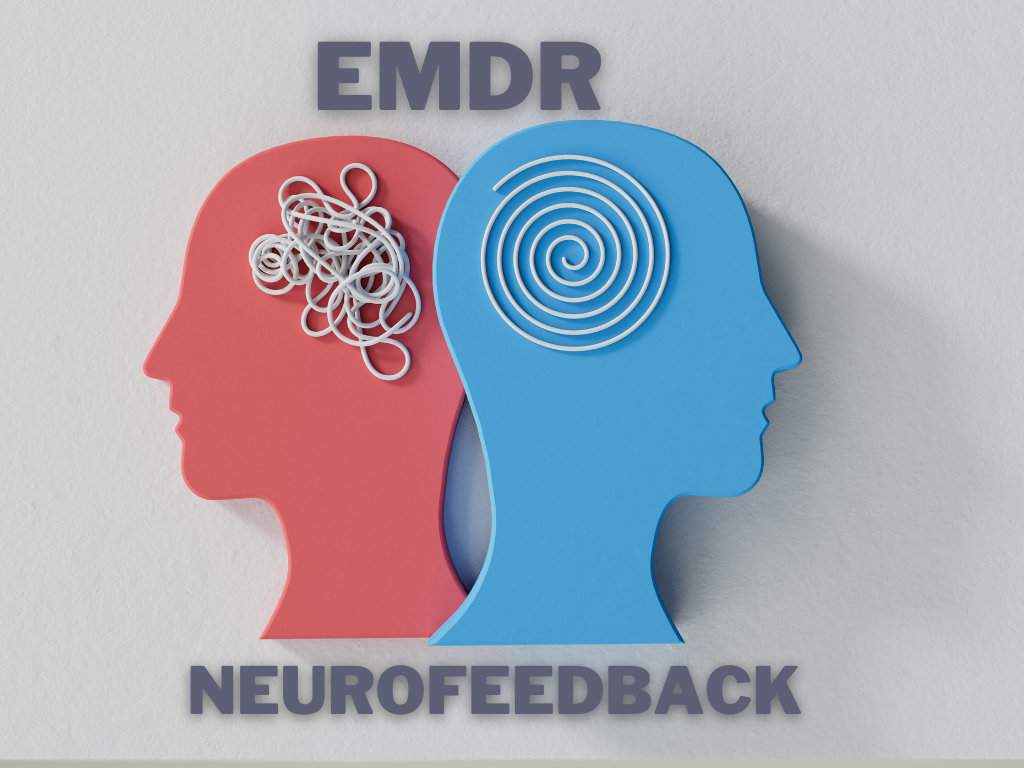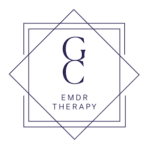Brainspotting vs EMDR. That is today’s debate. Brainspotting and EMDR are two approaches that have been gaining attention for their ability to help individuals recover from trauma and improve their state.
You might be wondering, Aren’t these the same types? No, you are wrong. And to be honest, it’s not your fault. There are so many types of therapies out there that sometimes even I, as a pharmacist, cannot remember them all.
Often considered to be ‘power therapies’ for people dealing with their past traumas, these innovative therapies show promise in promoting your healing and overall well-being. EMDR and brainspotting have so many similarities, yet you can clearly differentiate between them.
In today’s blog post on Brainspotting vs EMDR, I will help you understand what these therapies are and what differences they hold so that you can make the right decision for yourself.
EMDR
EMDR is a psychotherapy treatment that has been proven effective in alleviating the distress caused by stressful or traumatic life experiences. Do you know what it stands for? It stands for “Eye Movement Desensitization and Reprocessing” and has been employed by therapists since the 1980s.
The concept of EMDR was initially discovered by Dr. Francine Shapiro in 1987 during a walk in the park. Since then, EMDR has evolved so much that, today, doctors recommend it as an effective treatment in the Practice Guidelines of the American Psychiatric Association.
Well, now you might be wondering how this EMDR thing works… It works by not only moving eyes but also processing trauma stored within the brain. In some cases, hand clapping and audio stimulation are also utilized alongside eye movements.
It assists individuals in releasing their emotions and aiding in the recovery of their minds from memories and anxieties. The treatment typically consists of eight phases that address and eliminate the root cause for one’s emotional distress by desensitizing and reprocessing past experiences, present challenges, and future fears and aspirations.
Brainspotting
Brainspotting focuses on addressing the root cause of the problem in a different manner than EMDR. This is achieved by establishing a connection between eye positions, known as “brain spots”.
In this, your therapist gets access to the levels of your brain. These therapists are trained in Brainspotting and possess the ability to identify the source of an issue through signals emitted by the system.
They simply direct your gaze toward positions that allows you to tap into trauma. By directing your attention to an area in the brain, they can tap into its depths, enabling the processing and release of trauma for long-lasting healing.
Brainspotting vs EMDR – 3 Key Differences
After working as a pharmacist for years, there is one thing I can say for sure in our Brainspotting vs EMDR debate. Knowing what will work for you is important, but knowing what will NOT work for you is more important.
That’s why to choose the right therapy you first need to understand the differences between them.
· Structured and Flexible Approach
The main key distinction between EMDR and Brainspotting that I think is worth saying is in terms of their approach.
EMDR therapy follows a more structured approach that offers therapists and clients a roadmap for treatment. It encompasses eight phases aimed at addressing events, reducing distress, and instilling positive beliefs.
The therapist begins by collecting information about your trauma history, followed by educating you on the process and what to expect. This activates your target memory, leading to the desensitization and reprocessing phase, ultimately culminating in the installation of beliefs and the complete extinction of the associated symptoms.
On the other hand, Brainspotting takes a personalized approach compared to EMDR’s structured methodology. In this, the therapist does not have any protocol to adhere to, which gives the therapist a little flexibility but may also increase the risk of patient relapse.

· Difference in Relapse Rate
Although both treatments could involve the use of eye movements to treat trauma (EMDR may use other techniques as well), there is an essential difference in the relapse rate of patients.
In EMDR, the relapse rate is statistically extremely low as compared to other therapies. There’s a study that shows that in a follow-up period of more than 1 year, the EMDR group reported fewer problems related to depression and fewer relapses than the control group.
But with Brainspotting, things are a little different. We don’t recommend it as the first step in recovery from trauma. This is because this therapy taps into the unprocessed portion of the brain, without a clear framework to guide patients to adaptive resolution, which increases the risk of potential relapse.

· Difference in Results
The last key difference worth mentioning in our debate of Brainspotting vs EMDR is in their rate and speed of results.
Extensive research on EMDR supports its effectiveness in addressing a range of issues, including post-traumatic stress disorder (PTSD). According to a study, EMDR has a confidence level of 95% for the treatment of depressive and traumatic symptoms. Although it does include reliving and re-interpreting those traumatic memories, which might be painful for some, it surely appears to give far better results than any other type.
Moreover, further studies indicated that compared to other approaches, EMDR obtained clinically-relevant results in far less time and required no homework, medication, or preparation. (Novo Navarro et al., 2018)
In contrast, Brainspotting offers an intuitive therapeutic process that could be beneficial for clients who are looking for an alternative method for working through their trauma.

Conclusion
We all are dealing with some traumatic feelings in our life. No matter how hard we try, it is not easy to heal from them on your own. Thankfully, there are several different therapies out there.
But how do you find out which one will work for you and which one won’t? By knowing the differences between them. That is why I have categorized the difference between two well-known traumatic therapies these days. Brainspotting vs EMDR.
From having a well-structured approach to treating your trauma to an extremely low chance of relapse, EMDR is clearly a better choice in my opinion. It has a ton of evidence-based research to convince you that it can deliver you result.
To learn more or schedule a free consultation at Grigore Counselling & Associates who specialize in achieving accelerated results with advanced EMDR therapy procedures for professionals, you can visit their website: www.grigorecounselling.com.
If you are still not satisfied and want more information, you are always welcomed to read Robert’s Grigore’s book: You NEED Therapy. EMDR: Real People, With Real Problems, Getting Real Help.









